A massive cloud of dust and gas is known as the solar nebula crumbled in on itself about 4.6 billion years ago, forming what would ultimately become our solar system’s sun and planets.
At the heart of our solar system is the sun, a massive star whose gravitational pull keeps a slew of planets, dwarf planets (such as Pluto), comets, and meteoroids orbiting it.
Eight declared planets and at least five dwarf planets orbit our sun. According to a new study by the US Space Agency, the planets in the solar system are arranged the way they are because that is how the solar system was formed.
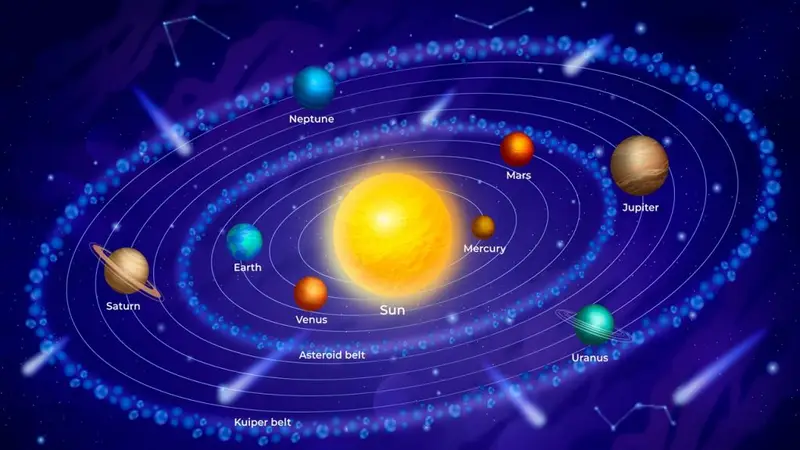
Including the Sun, the other planets in the solar system are Mercury, Venus, Earth, Mars, Jupiter, Saturn, Uranus, and Neptune.
According to a new study by the US Space Agency, the planets in the solar system are arranged the way they are.
The first four planets — Mercury, Venus, Earth, and Mars — are small and have rocky surfaces because they were formed in the solar system’s early years.
Beyond them are the materials that we are accustomed to seeing as ice, liquid, or gas settled in the outer regions of the young solar system — Jupiter, Saturn, Uranus, and Neptune.
●⫸ What Are Planets?
This somewhat simple question does not have a simple answer. Pluto and Ceres, on the other hand, were once considered planets in the solar system until discoveries sparked a scientific debate about how to best describe them.
A heated debate that continues to this day. The International Astronomical Union adopted the most recent definition of a planet in 2006. According to the rules, a planet must do three things:
1) It must revolve around a star that is Sun.
2) It must be big enough for gravity to push it into a spherical shape.
3) It had to be large enough that its gravity swept away every other object of a similar size in its orbit around the Sun.
It is critical to define the term planet because it reflects our understanding of the origins, architecture, and evolution of our solar system. The term “planet” originally referred to “wanderers” who were only visible as moving lights in the sky.
A planet is a celestial body that-
(a) revolves around The sun,
(b) has enough weight to conquer rigid body forces and assume a hydrostatic equilibrium (nearly round) shape,
(c) has eliminated the neighborhood around its orbit.
Objects classified as planets have evolved. The ancient Greeks considered the Earth’s Moon and Sun, as well as Mercury, Venus, Mars, Jupiter, and Saturn, to be planets.
Earth was not regarded as a planet, but rather the core object around which all other celestial objects revolved. Aristarchus of Samos presented the first known model that positioned the Sun at the center of the known universe, with the Earth revolving around it, in the third century BCE, but it was not widely accepted. It wasn’t until the 16th century that Nicolaus Copernicus revived the idea.
Ceres was discovered in 1801 between Mars and Jupiter and was initially classified as a planet. However, as more objects were discovered in the same area, it was discovered that Ceres was the first of a group of similar objects that were eventually referred to as asteroids (star-like) or minor planets in the solar system.
Pluto was named the ninth planet after it was discovered in 1930. Pluto, on the other hand, is much smaller than Mercury and even some of the planetary moons.
It differs from planetary bodies (Mercury, Venus, Earth, and Mars), gas giants (Jupiter and Saturn), and ice giants (Uranus, Neptune).
●⫸ Planetary Orbit-
An orbit is a regular, repeating path in space that one object takes around another. A satellite is a moving object in space. A natural satellite, such as the Earth or the moon, is possible.
Many planets in the solar system have moons that revolve around them. A satellite, like the International Space Station, can also be man-made.
The solar system’s planets, comets, asteroids, and other objects revolve around the sun. The majority of the objects orbiting the sun travel along or near an imaginary flat surface. The ecliptic plane is the name given to this fictitious surface.
Orbits come in a variety of shapes. All orbits are elliptical, which implies they are ellipses, like an oval. The orbits of the planets in the solar system are nearly circular.
Comet orbits are shaped differently. They are extremely eccentric or “squashed”. They resemble thin ellipses rather than circles.
Satellites in orbit around other planets, such as the Earth, do not always maintain the same distance from the planet.
They are sometimes closer, and sometimes they are much further away. Perigee is the closest point a satellite comes to Earth. The apogee is the farthest point.
Perihelion is the closest point in a planet’s orbit to the sun.
Aphelion is the farthest point from the sun. The Earth’s aphelion takes place during the summer in the Northern Hemisphere.
We understand exactly eight planets in the solar system, beginning with Mercury, the closest to the Sun, and progressing to Neptune.
Mercury has the shortest orbital period (88 Earth days) and thus the highest orbital speed, averaging 48 kilometers per second, according to Kepler’s laws.
Neptune, on the other hand, has a period of 165 years and an average orbital speed of only 5 kilometers per second.
All of the planets in the solar system have orbits with relatively low eccentricity.
Mercury has the most eccentric orbit (0.21); the rest have eccentricities less than 0.1.
Mars is fortunate in that its eccentricity is greater than that of many of the planets.
Otherwise, Brahe’s pre-telescopic observations would not have been adequate for Kepler to derive that its orbit was elliptical rather than circular.
Planetary orbits are also constrained by a common plane, which is close to the plane of Earth’s orbit (called the ecliptic).
●⫸ Order of the Planets from The Sun:
The Sun is orbited by eight “official” planets in the Solar System. The planets are listed below in sequence of their distance from the Sun:
Mercury, Venus, Earth, Mars, Jupiter, Saturn, Uranus, and Neptune are among the planets in the Solar System. “My Very Educated Mother Just Served Us Noodles” is a simple mnemonic for remembering the order.
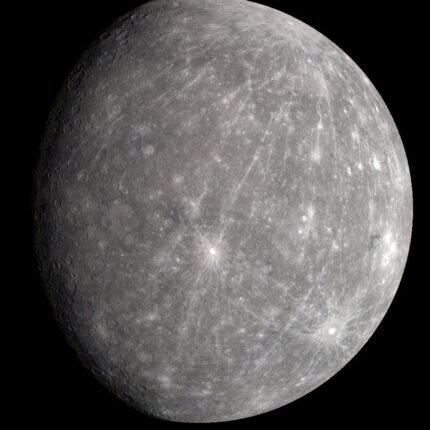
1) MERCURY
▶ The Romans believed that gods and goddesses oversaw all aspects of life on Earth.
▶ Mercury is named after the gods’ messenger.
▶ It is the closest planet to our Sun, at only 58 million kilometers. However, earned its popularity for being sun-baked and molten.
▶ Mercury is not the warmest planet in our Solar System.
2) VENUS
▶ Venus, an old Italian goddess affiliated with cultivated fields and gardens, was later identified by the Romans with Aphrodite, the Greek goddess of love.
▶ It is the second closest planet to our Sun, circling at a distance of 108 million kilometers.
▶ Venus is often referred to as Earth’s “sister planet”.
▶ Venus contains a very high percentage of Carbon Dioxide. And, due to its dense atmosphere and nearness to the Sun, it is the hottest planet in the Solar System, with temperatures reaching 735 K (462 °C).
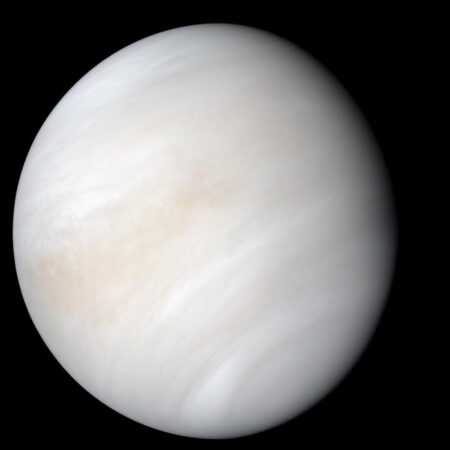
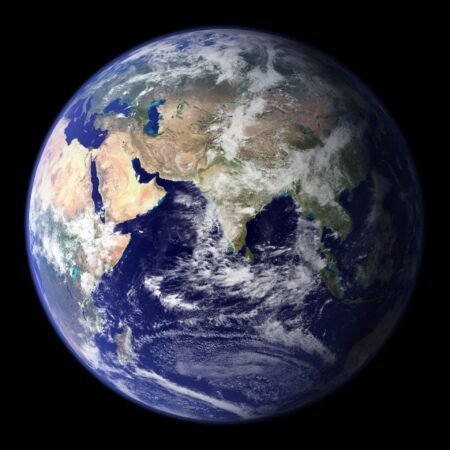
3) EARTH
▶ The word “Earth” is derived from the English and German words ‘eor (th)e/ertha’ and ‘erde’, which mean ground, respectively.
▶ It is our home and the only planet in our Solar System that actively supports life (that we know of).
▶ Our planet is the third closest to the Sun, orbiting it at a distance of 150 million kilometers.
▶ Earth is where we came from, and it has all of the necessary conditions for life to thrive.
4) MARS
▶ The ancient Romans named Mars after their god of war since its reddish color reminded them of blood.
▶ It is the fourth planet from the sun, located at a distance of approximately 228 million kilometers.
▶ It is also known as “the Red Planet” due to the reddish hue of its surface, which is caused by the presence of iron oxide.
▶ The Martian atmosphere is too thin, and the planet is too far away from our Sun, to sustain warm temperatures, which average 210 K (-63°C ) and vary greatly.
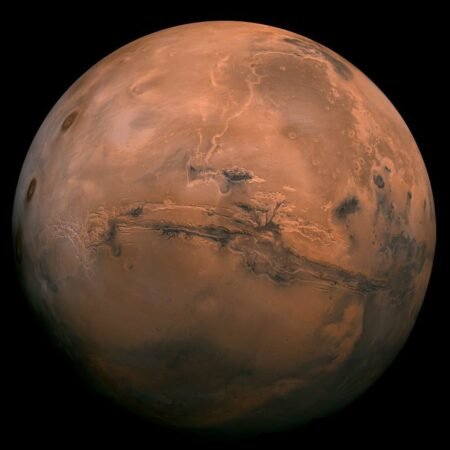
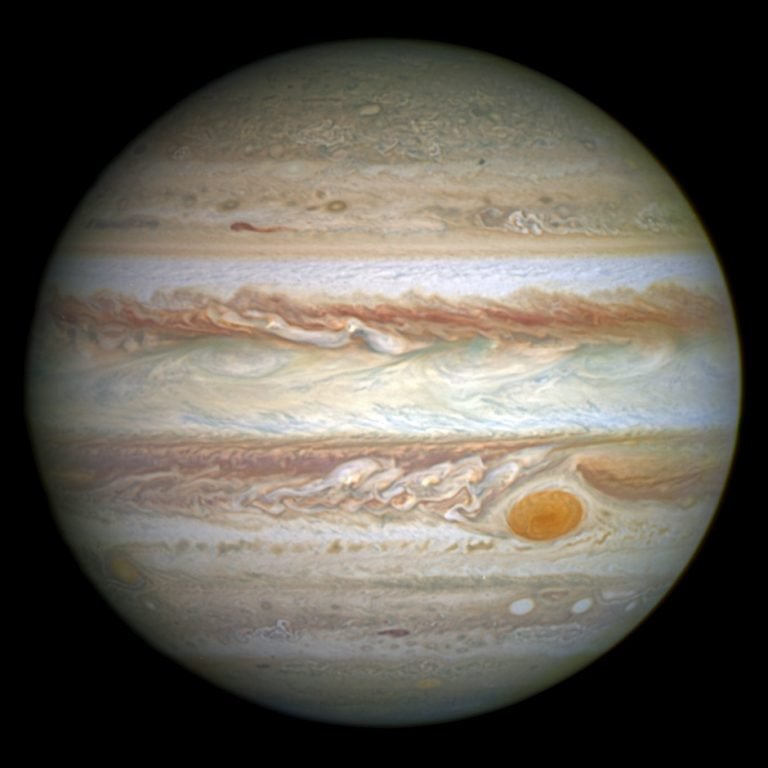
▶ Jupiter has the most intense atmosphere in the Solar System. Indeed, the combination of extremely high pressure and centripetal forces results in the most powerful storms ever seen.
5) JUPITER
▶ The Romans labeled the planet after Jupiter, their king of gods and god of the sky and thunder.
▶ It is the fifth planet from the Sun, located at a distance of approximately 778 million kilometers.
▶ Jupiter is also the hugest planet in our Solar System.
▶ It is a gas giant, which means it is mostly made up of hydrogen and helium, with roiling clouds and other inert gases thrown in for good measure.
4) SATURN
▶ The planet is named after the Roman god of agriculture and wealth.
▶ It is the 6th planet from the Sun, at a distance of approximately 1.4 billion kilometers.
▶ It is a gas giant, like Jupiter, with layers of gaseous material to protect a solid core.
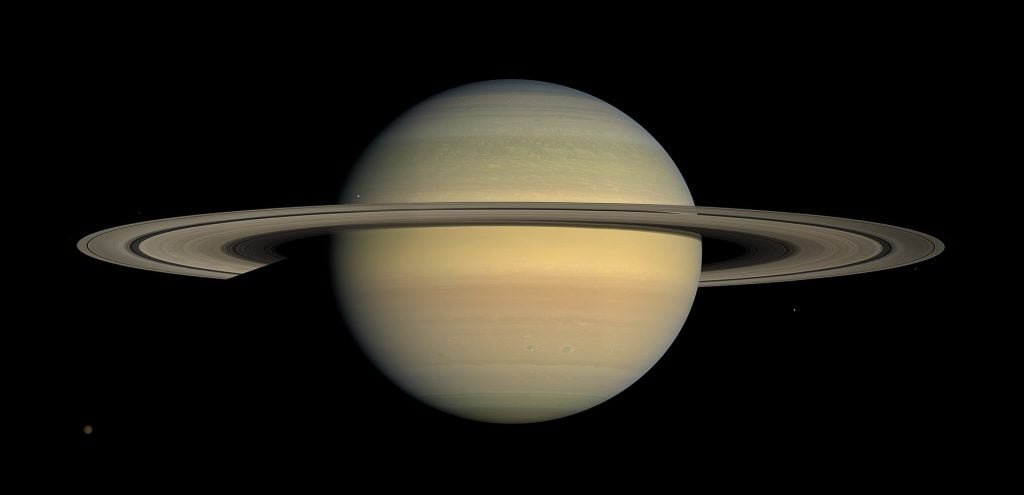
▶ Saturn’s most famous and easily recognized feature is its stunning ring system, which consists of seven rings separated by gaps and divisions.
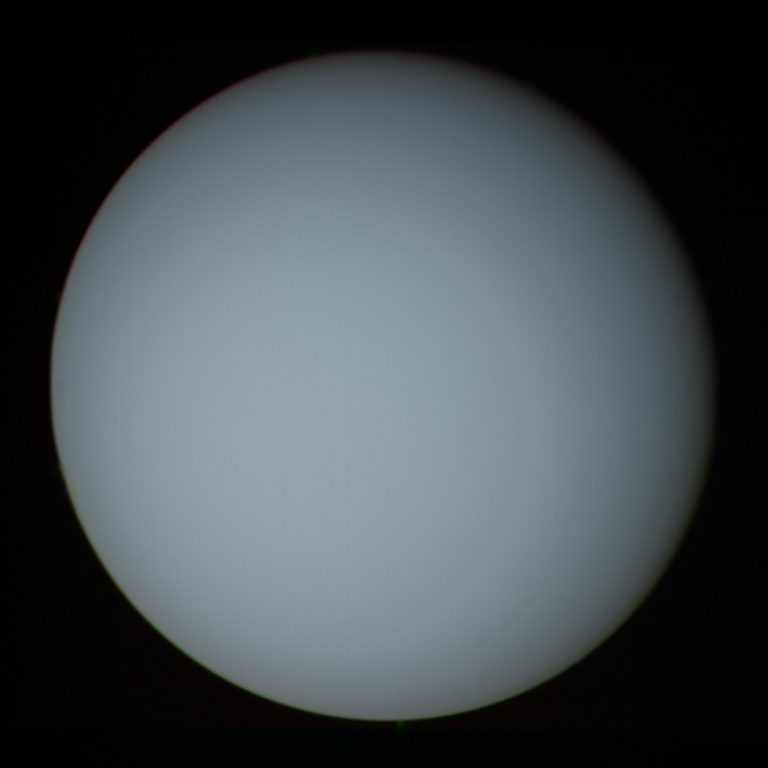
▶ Its bluish appearance is also due to the presence of methane ice.
5) URANUS
▶ The name Uranus refers to the Greek god of the sky.
▶ It is the seventh and the coldest planet from the sun, located at a distance of approximately 2.9 billion kilometers.
▶Though classified as a “gas giant,” it is also known as an “ice giant” due to the presence of ammonia, methane, water, and hydrocarbons in ice form.
4) NEPTUNE
▶ Neptune is named after the Roman god of the sea.
▶ It is the eighth and most distant planet from the Sun, at a distance of approximately 4.5 billion kilometers.
▶ It is technically a gas giant, like Jupiter, Saturn, and Uranus, but it is more accurately classified as an “ice giant” with Uranus.
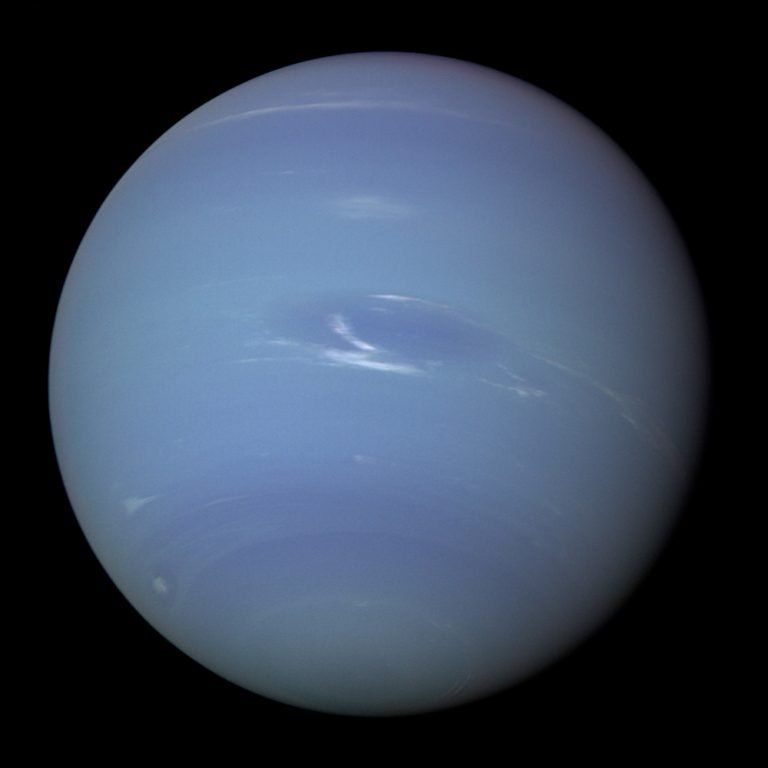
▶ Neptune cannot be seen with the naked eye due to its extreme distance from our Sun.
●⫸ Planets In the Solar System
1) Mercury:
✅ Mercury, the smallest planet in our solar system and the closest to the Sun, is only slightly larger than Earth’s Moon.
✅ The Sun would appear more than three times as large from the surface of Mercury as it does from Earth, and the sunlight would be up to seven times brighter.
✅ The surface temperatures of Mercury are both extremely hot and extremely cold.
✅ Daytime temperatures on the planet can reach 800°F (430°C) due to its close proximity to the Sun.
✅ Temperatures can drop to -290°F (-180°C) without an atmosphere to keep the heat in during the night.
✅ It has a radius of 2,440 kilometers, which is slightly more than one-third the width of Earth.
✅ It rotates counterclockwise around its axis.
✅ The mercury doesn’t have rings nor does it have any moons.
2) Venus:
✅ Venus is the Earth’s closest planetary neighbor and the second planet from the Sun.
✅ It’s one of the four inner, terrestrial (or rocky) planets in the solar system, and it’s often referred to as Earth’s twin due to its size and density similarities.
✅ It rotates slowly in a clockwise manner around its axis. However, these are not identical twins; there are significant differences between the two worlds.
✅ Venus has a thick, toxic atmosphere that is filled with carbon dioxide, and it is perpetually shrouded in thick, yellowish clouds of sulfuric acid that trap heat and cause a greenhouse effect.
✅ Even though Mercury is closer to the Sun, it is the hottest planet in our solar system.
✅ Venus’s surface temperature is around 475 degrees Celsius, which is hot enough to melt lead.
✅ The surface is rusty in color and dotted with intensely crunched mountain ranges and thousands of large volcanoes dotting the landscape.
✅ Some volcanoes, according to scientists, may still be active. Just like Mercury, Venus also doesn’t have any moons or rings.
3) Earth:
✅ Earth is the third planet from the Sun, and it is the only place we know of that is inhabited by living things so far.
✅ Although Earth is only the fifth-biggest planet in our solar system, it is the only one with liquid water on its surface.
✅ Earth is the largest planet closest to the Sun, slightly larger than Venus.
✅ It rotates counterclockwise around its axis.
✅ The four celestial bodies are made entirely of rock and metal.
✅ Earth is the largest terrestrial planet, with a radius of 6,371 kilometers, and the fifth largest planet overall.
✅ It is 150 million kilometers from the Sun, and light from the Sun takes about eight minutes to reach our planet.
✅ The atmosphere near the Earth’s surface is composed of 78 % of nitrogen, 21 % of percent oxygen, and 1% other gases such as argon, carbon dioxide, and neon.
✅ The only planet with a single moon is Earth.
✅ Our Moon is the most visible and well-known object in the night sky.
✅ Earth has no rings.
4) Mars:
✅ It is not for the faint of heart. It’s arid, rocky terrain that’s bitterly cold.
✅ Mars is one of Earth’s two nearest planetary neighbors.
✅ It is the fourth planet from the Sun.
✅ It rotates counterclockwise around its axis.
✅ Mars is one of the most visible planets in the night sky, appearing as a bright red point of light.
✅ Mars is roughly half the size of Earth, with a radius of 3,390 kilometers.
✅ Mars has 2 minor moons, Phobos and Deimos, which could be asteroids. They’re potato-shaped because they have too little mass to be spherical due to gravity. There are no rings on Mars.
5) Jupiter:
✅ It is the fifth planet from our Sun and by far the largest planet in the solar system, weighing more than twice as much as the other planets in the solar system combined.
✅ Jupiter’s streaks and swirls are super cold, windy clouds of ammonia and water floating in a hydrogen and helium atmosphere.
✅ Jupiter’s renowned Great Red Spot is a huge storm several times the size of Earth that has been surging for centuries.
✅ Jupiter is 11 times the size of Earth, with a radius of 69,911 kilometers.
✅ It rotates counterclockwise around its axis. Jupiter, with four major moons and many smaller moons, resembles a miniature solar system.
✅ Jupiter has 53 declared moons and 26 provisional moons that have yet to be discovered.
✅ Jupiter’s rings were a bit surprising because they are made up of small, dark particles that are difficult to see unless they are backlighted by the Sun.
6) Saturn:
✅ It is our solar system’s sixth planet from the Sun and the second-largest planet.
✅ Saturn, like Jupiter, is a massive ball composed primarily of hydrogen and helium.
✅ The Saturn system has been a rich source of scientific discovery, but it still holds many mysteries.
✅ It is 9 times the size of Earth, with a radius of 58,232 kilometers, and rotates counterclockwise around its axis.
✅ It currently has 53 confirmed moons and 29 provisional moons waiting for confirmation.
✅ The rings of Saturn are thought to be fragments of comets, asteroids, or shattered moons.
✅ They disintegrated before reaching Saturn and were completely ripped apart by the planet’s powerful gravity.
✅ Saturn’s ring structure extends up to 282,000 kilometers from the planet, but the vertical height in the main rings is typically around 30 feet (10 meters).
7) Uranus:
✅ It is the seventh planet from the Sun and the planet with the third largest diameter in our solar system, is extremely cold and windy.
✅ It is four times the size of Earth, with a radius of 25,362 kilometers.
✅ It rotates at nearly a 90-degree angle from its orbital plane and counterclockwise around its axis.
✅ It appears to spin on its edge, orbiting the Sun like a rolling ball as a result of this unusual tilt.
✅ It has a total of 27 known moons.
✅ While the majority of satellites orbiting other planets in the solar system are named after Greek or Roman mythology.
✅ While the majority of satellites orbiting other planets in the solar system are named after Greek or Roman mythology.
✅ Uranus has two ring systems.
✅ The inner nine-ring system is mostly made up of narrow, dark grey rings.
✅ There are two outer rings: the innermost is reddish, like dusty rings elsewhere in the solar system, and the outermost is black.
7) Neptune:
✅ It is the eighth and most distant planet in our solar system, is dark, cold, and whipped by supersonic winds.
✅ It is more than 30 times as far away from the Sun as Earth, is the only planet in our solar system that cannot be seen with the naked eye.
✅ It is roughly four times the size of Earth, with a radius of 24,622 kilometers.
✅ Neptune also rotates counterclockwise around its axis.
✅ It is known to have 14 moons.
✅ So far, we know of at least five major rings and four major ring arcs on Neptune.
●⫸ Major Planets and Dwarf Planets
A dwarf planet is a small planetary-mass object in the immediate orbit of the Sun, relatively small than any of the eight historical planets in the solar system but still considered a world in its own right.
1️⃣ Pluto is a dwarf planet located in the Kuiper Belt, a donut-shaped region of icy bodies beyond Neptune’s orbit. There could be millions of these icy objects, known as Kuiper Belt objects, in our solar system’s far reaches.
Pluto, which is smaller than the Moon, is home to a heart-shaped glacier. This captivating world has blue skies, rotating moons, mountain ranges, and red snow.
2️⃣ Planet of dwarfs Ceres is the largest asteroid belt object between Mars and Jupiter, and it is the only dwarf planet in the inner solar system. It has been referred to as an asteroid for many years, but it is so much larger and different from the rocky neighbors that researchers categorized it as a dwarf planet in 2006.
Despite accounting for 25% of the total mass of the asteroid belt, Pluto is 14 times more massive. Ceres is named after the Roman goddess of harvests and corn. The term cereal is derived from the same name.
3️⃣ Makemake, along with Pluto, Eris, and Haumea, is located in the Kuiper Belt, a donut-shaped region of icy bodies further than Neptune’s orbit.
Makemake, which is slightly smaller than Pluto, is the second-brightest object in the Kuiper Belt seen from Earth (while Pluto is the brightest). This dwarf planet takes about 305 Earth years to complete one orbit around the Sun.
4️⃣ Haumea, was recognized as a dwarf planet in 2008 and is located in the Kuiper Belt, a donut-shaped region of icy bodies beyond Neptune’s orbit. Pluto, Eris, and Makemake are the other known dwarf planets in the solar system in the Kuiper Belt.
It is about the size of Pluto. It is one of our solar system’s fastest rotating large objects. The fast spin distorts Haumea’s shape, making it resemble a football.
5️⃣ Eris is one of the largest known dwarf planets in the solar system. It is roughly the same size as Pluto but three times farther away from the Sun.
The dwarf planet Eris is part of the Kuiper Belt, a group of objects that orbit in a disc-like zone beyond Neptune’s orbit. This distant realm is populated by thousands of mini-icy worlds that formed early in our solar system’s history, around 4.5 billion years ago.
●⫸ Goldilocks Zone
So far, we know of only one planet that is oozing with life – Earth. And water is an essential component of life as we know it on our planet. While astronomers do not know whether life exists on other planets in the solar system, they use a set of criteria to narrow their search for potentially habitable worlds.
The Goldilocks Principle in astrobiology refers to the range of distances that a planet can be from its star while maintaining global temperatures that are just right for water to be liquid. This is referred to as the Goldilocks Zone. Temperature and pressure that allow for liquid water are considered “just right,” because water is required for life as we know it.
The Goldilocks Zone of our solar system extends roughly from Venus’s orbit around the sun to Mars’ orbit around the sun, based on the idea that liquid water on a planet’s surface makes life possible.
The Earth’s orbit is furthest from the sun than that of Venus but closer than that of Mars. In other words, Earth’s orbit is within the Goldilocks Zone of the sun. This is why Earth can sustain a vast ocean of liquid water, making it a suitable environment for life.
Venus and Mars are the planets in the solar system which are at distances from the sun where water on the surface is possible. Scientists believe Venus had fresh water, potentially even a shallow ocean, billions of years ago.
However, at some point, Venus’s atmosphere became saturated with extremely high levels of co2 and other greenhouse gases, resulting in a severe greenhouse effect that heated the planet’s surface to approximately 462° C (864° F).
The stronger the greenhouse effect in an atmosphere, the hotter the planet. Because of Venus’s high temperature, if water existed on its surface, it would only exist as a gas.
Mars, too, changed and ended up losing liquid water from its ground a long time ago. The ancient Mars atmosphere was stripped away by the solar wind, having left the air pressure too reduced for water to exist as a liquid for long period.
●⫸ Conclusion
The planets and the Sun are considered major bodies in our Solar System, while comets, meteoroids, asteroids, and moons are considered minor bodies. There are more celestial bodies than we can imagine in the universe. There are some planets out there with life that we are completely unaware of.
We study the giant planets in our solar system because they teach us about the creation of solar systems, our planet, and the conditions required for life. Someday, we might be able to answer the age-old question of whether or not there is life beyond Earth.

